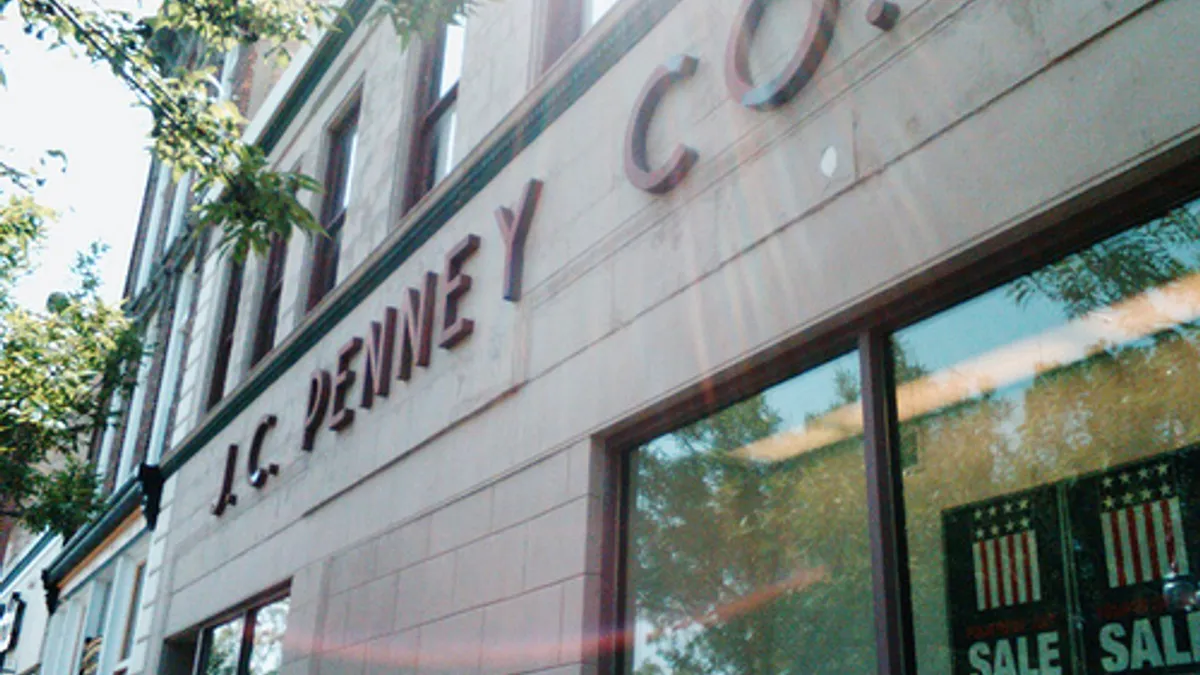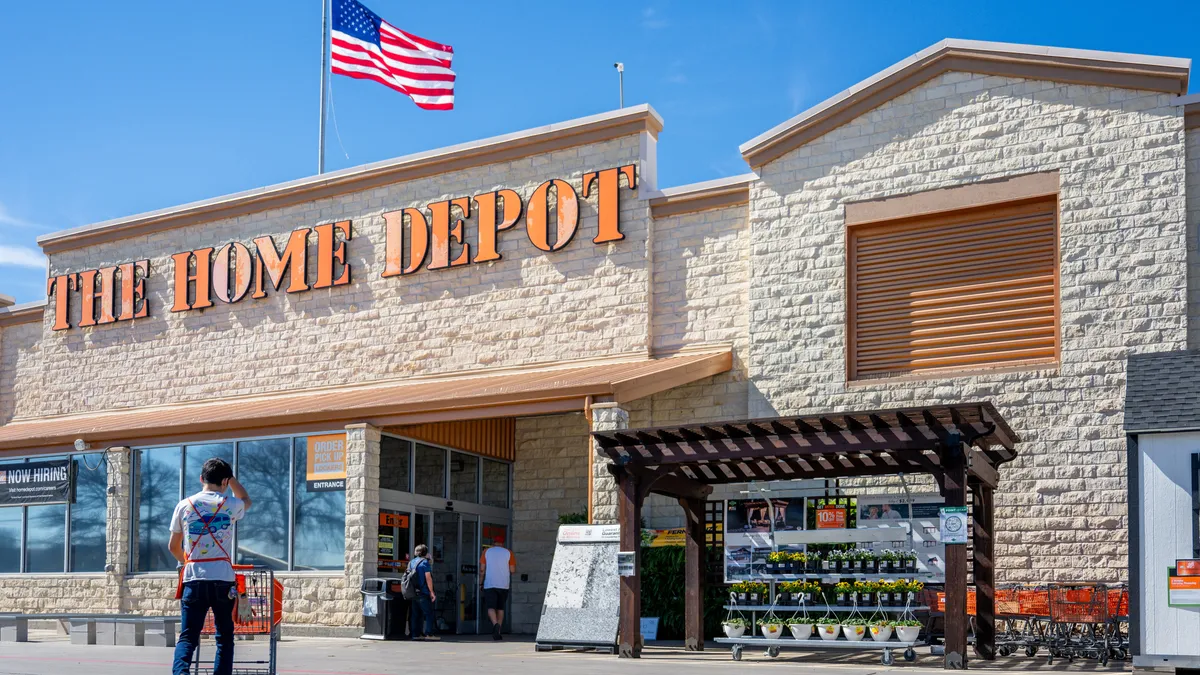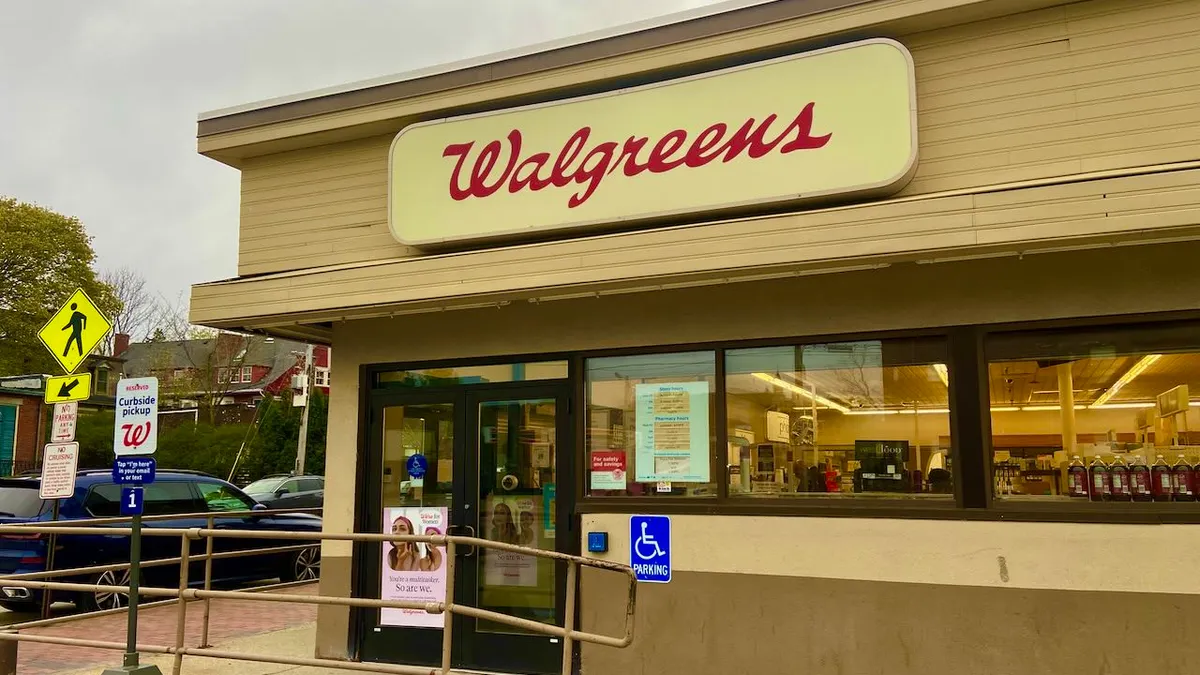J.C. Penney's plan to sell its department store operations to landlords Simon Property Group and Brookfield Asset Management won approval in federal bankruptcy court on Monday.
The court confirmation puts the deal in its final stages, setting up the company to change hands going into the holidays after decades of Penney being a publicly traded company. The company said in a press release it expects the transaction to close in late November.
The sale and approval followed a hearing packed with hours of testimony as well as months of negotiations and fights among stakeholder groups.
The slow-grinding talks and progress on a deal to keep Penney alive has damaged its business, according to the retailer's attorneys and advisers, who have said on multiple occasions in recent weeks that some suppliers have scaled back shipments to the retailer for fear the deal might not happen.
The deal, once it is finalized, will save Penney from retail oblivion, keeping more than 600 stores open and some 60,000 jobs in place, at least for now. Yet the retailer still faces a tough environment, with department stores continuing their slide that began long before COVID-19 rocked the landscape and sent Penney into bankruptcy court.
"I don't think they've really fixed the problem," said Pulse Ratings CEO Dennis Cantalupo in a recent interview. "They've closed down some underperforming stores. But now they must turn around the business in what's expected to be a slow recovery for the traditional department store."
'A wild corporate ride'
Like many retailers to file for Chapter 11 amid the pandemic, Penney's troubles are deeper than COVID and go back much further than 2020. Its sales have declined every year since 2015. It has posted losses for most of the past decade. It carried a hefty debt load tracing back to former CEO Ron Johnson's disastrous turnaround campaign in the early 2010s.
Over the years, merchandising, especially around women's apparel, has dogged Penney. CEO Jill Soltau and her team have worked to reverse negative trends since she started. As of September, the retailer had rolled out a women's merchandising revamp to 92 stores.
The retailer has been using lab stores to test new initiatives such as occasion and visual merchandising, contactless and curbside pick-up options, as well as store feature like a women's styling room and lounge.
Even with those efforts, J.C. Penney's struggles have continued through the bankruptcy process. According to operating reports filed in court, Penney's revenue has fluctuated month to month since May. Sales in September fell more than 20% from August, to $554.5 million. The retailer has also posted an operating loss every month since July. In September, operating loss widened to $59.3 million, and net loss was $102 million.
Not helping things: The time the retailer has spent negotiating its sale to Simon and Brookfield has been expensive. Payments to bankruptcy professionals reached $24.4 million in September and $18.7 million in August.
Financially, J.C. Penney today still shows high default risk with poor core health, according to financial analysis firm RapidRatings, which gives the retailer a "very unimpressive" score of 28 out of 100 on a measure of financial health.
"Pre-pandemic, and throughout the last five years, J.C. Penney has had a wild corporate ride," said RapidRatings Chairman and CEO James Gellert in an email, pointing to Penney's several unsuccessful organizational restructurings, brand refresh and an "awkward pivot" to home appliances.
The financial risk comes in part from the slow movement of product at Penney — with an average of 100 inventory days, as compared to an industry average of 76 days — as well as declining return on assets over the years, according to RapidRatings analysis.
"However, what still makes JC Penney an attractive asset are its online revenues, its large pool of assets, and the simple fact that it is a 100+ year old brand — all at a discount," Gellert said.
Falling behind
Traffic data shows the retailer's continued struggles as well. Like its peers, Penney made big gains in foot traffic in the months following the COVID-19 closures this spring. But, according to data from analytics firm Placer.ai provided to Retail Dive, Penney saw its lowest foot traffic in a week on Oct. 19, with levels down 38.2% year over year. During the same period Kohl's, Macy's and T.J. Maxx all had their best performance in weeks.
Traffic data provided to Retail Dive by Earnest Research also shows Penney's traffic down more than 30% throughout October and trailing competitors Burlington Stores, Kohl's and T.J. Maxx. Penney's market share for store sales among those competitors, meanwhile, has been declining steadily since 2017, including through much of 2020, ending with 10% in the third quarter. That is down from 16% share throughout 2017, according to Earnest Research.
And while Penney says its online sales have progressed this year amid the pandemic, its online market share has slipped in 2020 compared to 2019 while Kohl's boosted its online share compared to past years, according to Earnest Research data.
Penney's market share among department store competitors, including Macy's, Neiman Marcus and Nordstrom, was also lower in October than at the beginning of the year, according to financial data firm Facteus. The retailer ended the month with 8% share, compared to a max share of 15%, which Penney hit a few times this year, mostly before the spring COVID-19 closures.
One bright spot of data for the retailer: Its customer retention has improved in 2020 compared the past two years, suggesting new customers this year are more loyal, according to Earnest Research.
A life-saving deal
Post-acquisition, Penney projects sales to grow 42.9% next year compared to a 2020 that brought a massive revenue hit in the form of the COVID-19 closures, according to a securities filing related to the retailer's deal with Simon and Brookfield. From there Penney anticipates 4.6% sales growth in 2022, 2.6% growth in 2021 and 3.3% growth in 2024.
Penney also projects EBITDA to grow in the high single digits starting in 2022. This is all based on a smaller footprint, of around 650 stores — a smaller figure than the company initially expected to close when it filed for bankruptcy.
Penney said those stores are the "highest sales-generating, most profitable and most productive stores in the network," accounting for some 87% of Penney's 2019 sales. They also include some "lower productivity stores" to "align" with "assumptions" related to the retailer's spin-off REIT, but Penney didn't spell out exactly what that means.
It may well be that Penney's deal to Simon and Brookfield saved many stores, with its soon-to-be owner-landlords taking on the retailer to preserve anchor spots in malls and prevent other retailers from following Penney out the door.
In fact, the deal may have saved Penney from going out of business entirely.
In testimony yesterday, David Kurtz, head of restructuring for financial firm Lazard, described Penney as a "melting ice cube," unable to procure the inventory it needs to be profitable as suppliers de-prioritize the retailer.
Simon and Brookfield were the only parties willing to put up significant capital for Penney, according to Kurtz. While the private equity firm Sycamore Partners, which has an established history of buying up distressed retail companies, was active in the bidding process for Penney, the firm wasn't willing to put up significant investment in the retailer, but rather sought to manage it for a fee should lenders take it over in bankruptcy, Kurtz said.
Fellow department store Hudson's Bay Company, which has its own financial travails, was also involved in negotiation. But, like Sycamore, the retailer didn't want to put up the money necessary to buy Penney and also sought to manage Penney for a fee.
Kurtz said the team working on the deal thought a Simon and Brookfield letter of intent to buy Penney might surface other interested buyers, but none emerged. With Penney still struggling and its bankruptcy loan maturing in mid-November, Penney faced liquidation without a deal, according to Kurtz.
But now, with the hard-fought deal nearly across the finish line, Penney has the hard work to do of turning around in a battered sector.
"Really, it's a very fancy financial deal," Nick Egelanian, president of retail development firm SiteWorks, said in a September interview. "It's just going to make the liquidation of J.C. Penney far more orderly, and take a little longer. I mean, you're not going to see J.C. Penney suddenly become a relevant company, or anybody investing in J.C. Penney to make it a relevant company going forward."
Pointing to decades of downward trends in the department store sector, Egelanian said, "It's irrelevant for a reason and there's not much they can do to fix that."























